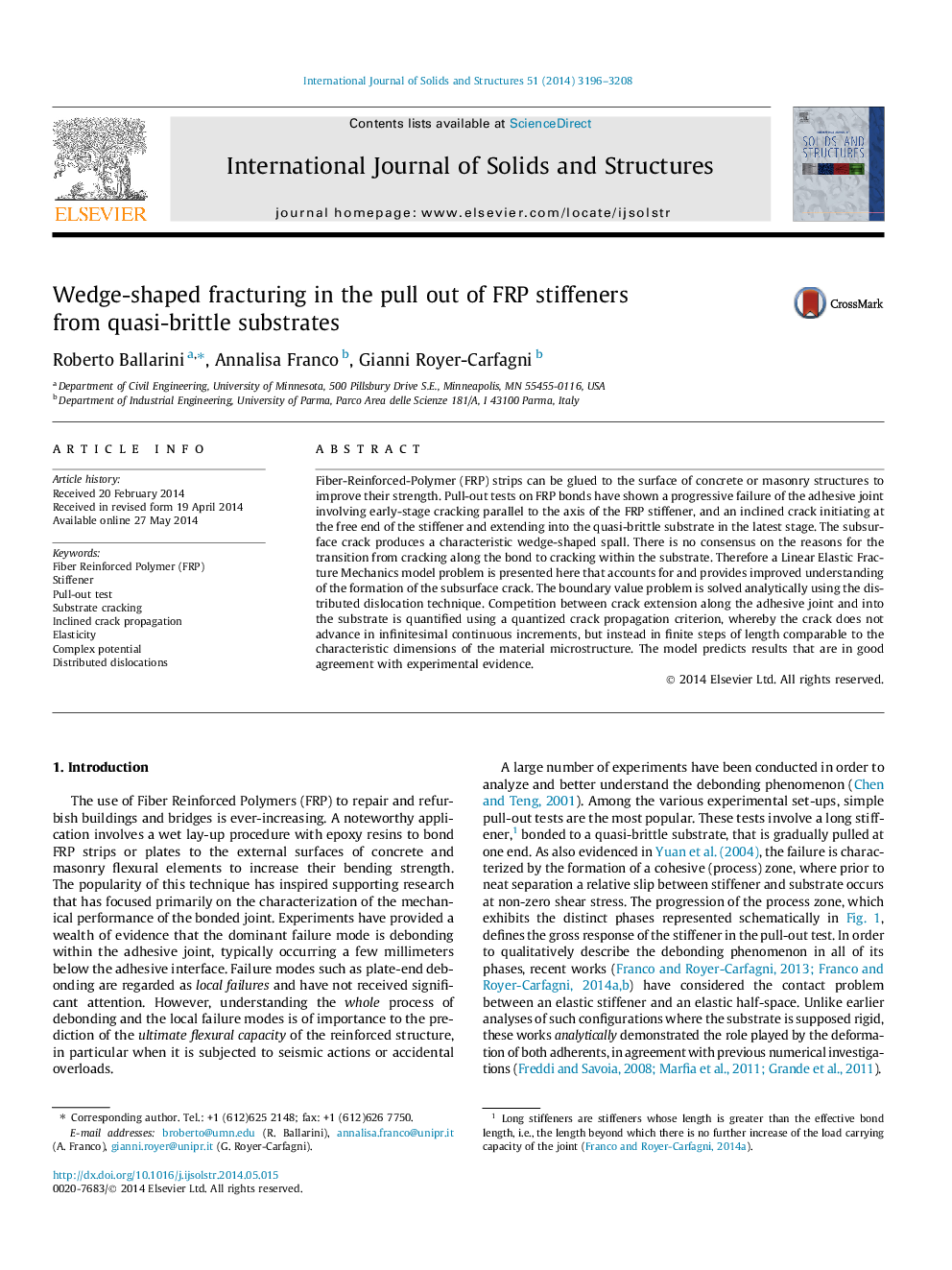| کد مقاله | کد نشریه | سال انتشار | مقاله انگلیسی | نسخه تمام متن |
|---|---|---|---|---|
| 277590 | 1430235 | 2014 | 13 صفحه PDF | دانلود رایگان |

• Pull-out failure of FRP-to-concrete bonded joints is characterized by a wedge-shaped spall from the substrate.
• There is no consensus on the modeling of this characteristic type of failure, hence this work.
• Adhesive-joint debonding and subsurface crack propagation are competing damage mechanisms.
• If crack progresses in jumps (quanta), at a certain stage subsurface propagation is favored.
• The proposed model predicts the characteristic angle of the spall in agreement with experiments.
Fiber-Reinforced-Polymer (FRP) strips can be glued to the surface of concrete or masonry structures to improve their strength. Pull-out tests on FRP bonds have shown a progressive failure of the adhesive joint involving early-stage cracking parallel to the axis of the FRP stiffener, and an inclined crack initiating at the free end of the stiffener and extending into the quasi-brittle substrate in the latest stage. The subsurface crack produces a characteristic wedge-shaped spall. There is no consensus on the reasons for the transition from cracking along the bond to cracking within the substrate. Therefore a Linear Elastic Fracture Mechanics model problem is presented here that accounts for and provides improved understanding of the formation of the subsurface crack. The boundary value problem is solved analytically using the distributed dislocation technique. Competition between crack extension along the adhesive joint and into the substrate is quantified using a quantized crack propagation criterion, whereby the crack does not advance in infinitesimal continuous increments, but instead in finite steps of length comparable to the characteristic dimensions of the material microstructure. The model predicts results that are in good agreement with experimental evidence.
Journal: International Journal of Solids and Structures - Volume 51, Issue 18, September 2014, Pages 3196–3208